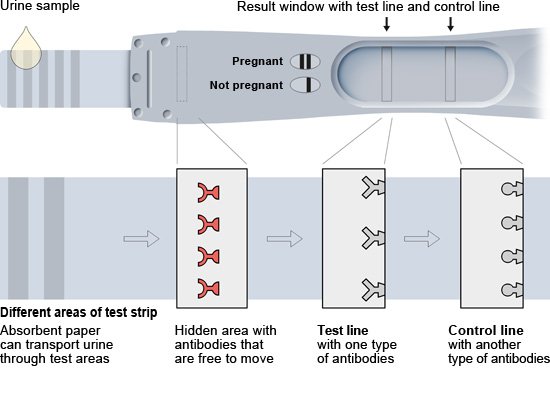How do they work?
Immunological tests take advantage of the body’s immune system: In order to fight germs or foreign substances, the immune system produces antibodies. These are proteins that can catch and stop the "attackers" from harming you. Like a key that fits a lock, different special antibodies are made for each germ or foreign substance.
The immunological tests used in laboratories are made by producing artificial antibodies that exactly match the substance or germ in question. When these antibodies come into contact with a sample of blood, mucous membrane, urine or stool that has the matching substance or germ in it, they bind to it. So the reaction shows that the specific germ or substance is present.
In some tests, the reaction can be seen just by looking at it – like the blood sticking together on a test card for determining your blood group. In other tests, the reaction is made visible using a fluorescent dye or an enzyme.


